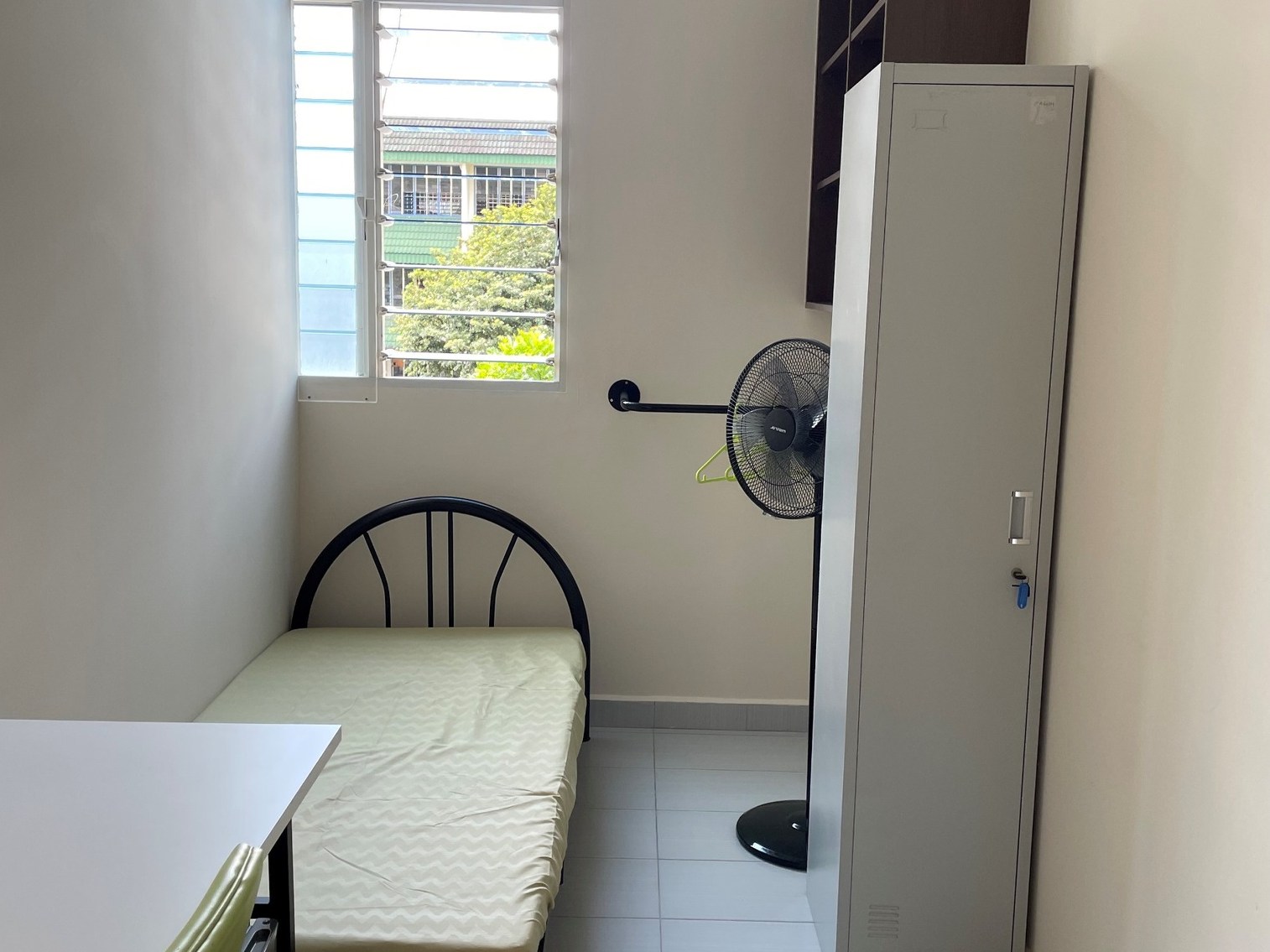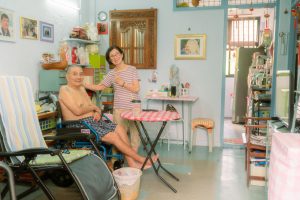Top image: Housing & Development Board / Facebook
Who said Singapore doesn’t look out for its singles?
They might not have extra BTO ballots (or the slew of other perks available to young married couples) but help is on the way for low-income singles who need or want a space to call their own.
ADVERTISEMENT
The Housing & Development Board (HDB) is piloting a new hostel-style public rental scheme for solo tenants, meant to give them more privacy and a community-type living environment.
Set to receive applications by the end of the year, the compound, converted from the former Anderson Junior College hostel, will house 480 singles.
There are pros: Each tenant gets 9 square metres of space to themselves, furnished with a bed frame, wardrobe, table, chair, shelves, and a mini-refrigerator.
And then there are cons: Shared kitchen, bathrooms, and dining spaces. (If you’ve ever done hostel living before, you’ll know—not everyone cleans up after themselves.)
I’m also definitely feeling the Scandinavian design influence. A Scandinavian prison, that is. And I don’t mean this as a diss in the slightest.
I just mean that the compound is more of a compact, no-frills dormitory than a sexy co-living space. After all, it is meant for singles on a budget who have no family support or other housing options.
Behold, a typical bedroom.
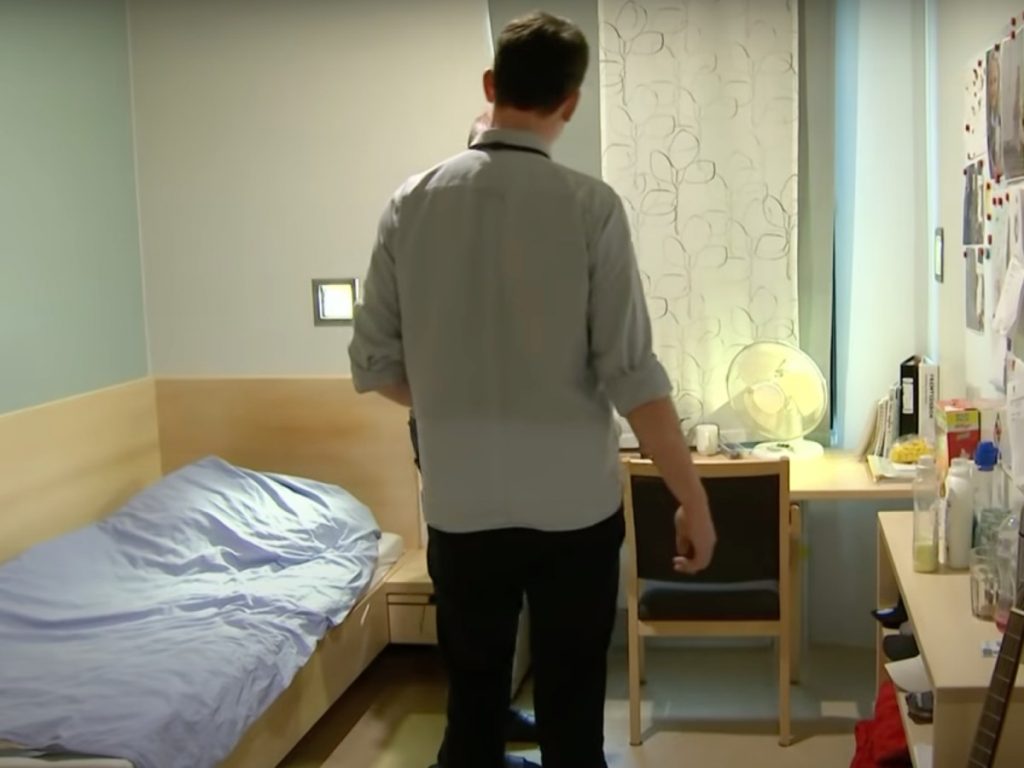
Wait, my bad. That’s a room in Norway’s Halden Prison. Here’s an actual room that Singaporean singles will be able to rent from the HDB.
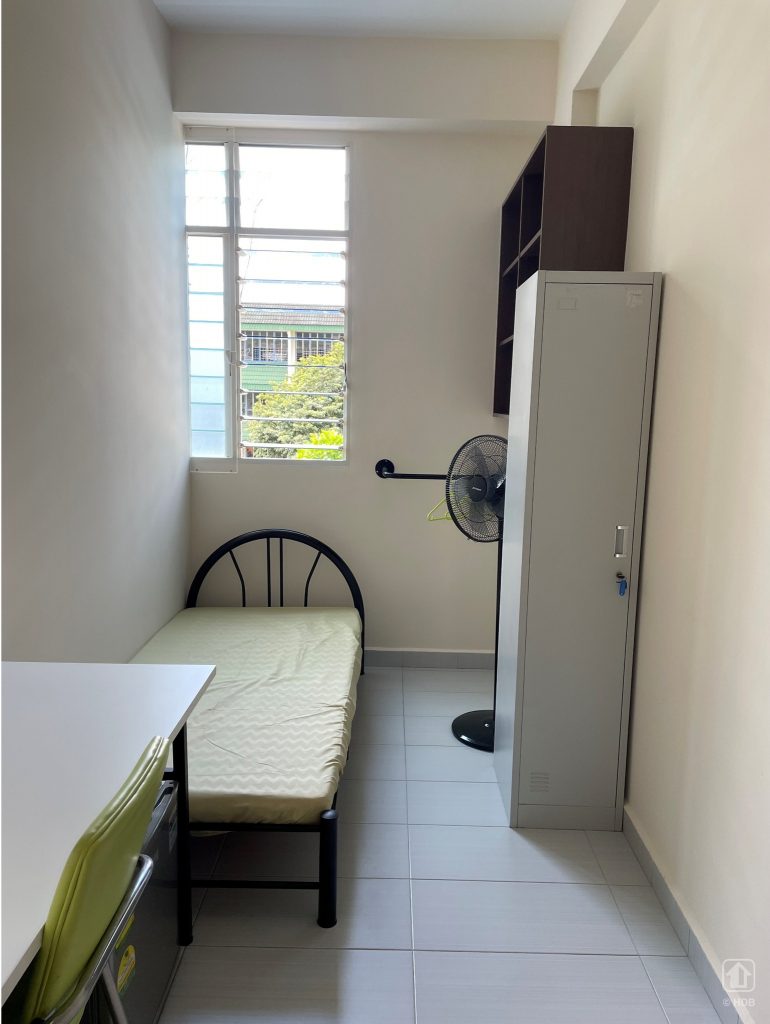
The partition wall slicing the window in half is a rather…avant-garde design choice. But it appears to be rooted in the practical need to divvy up the original 240 units into 480 single rooms.
ADVERTISEMENT
Half-window aside, the room is pretty compact and utilitarian, with a locker-like wardrobe that calls to mind the property’s history as a dorm for students.
This next little corner is a communal dining room that features full windows (!) which lets some natural lighting into the space that’s meant to “foster social interaction and bonding” between residents.
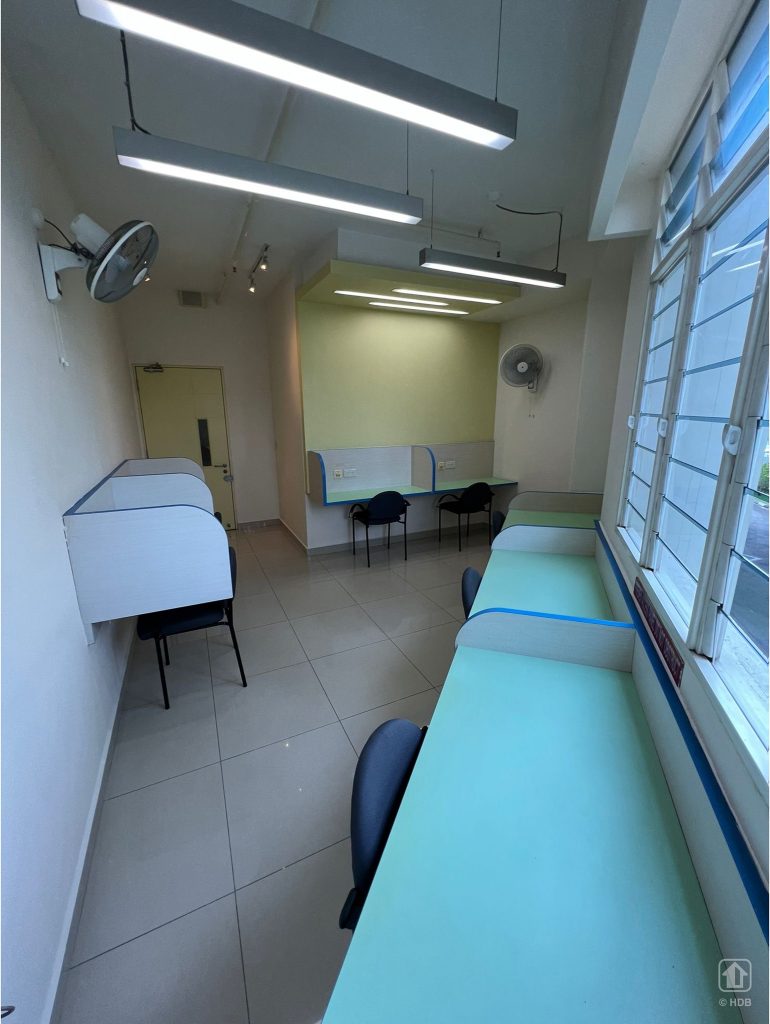
Converted from a study room, the dining space appears to retain most of the original fittings, allowing residents the choice of facing a blank wall, or a window while they chow down.
Partitions demarcate each resident’s table space. Perfect for those who are territorial and hate sharing study notes- I mean food.
Lastly, we have a pantry area with a theme that can only be described as grey on grey. Like the dining area, we’re just thankful it has windows.
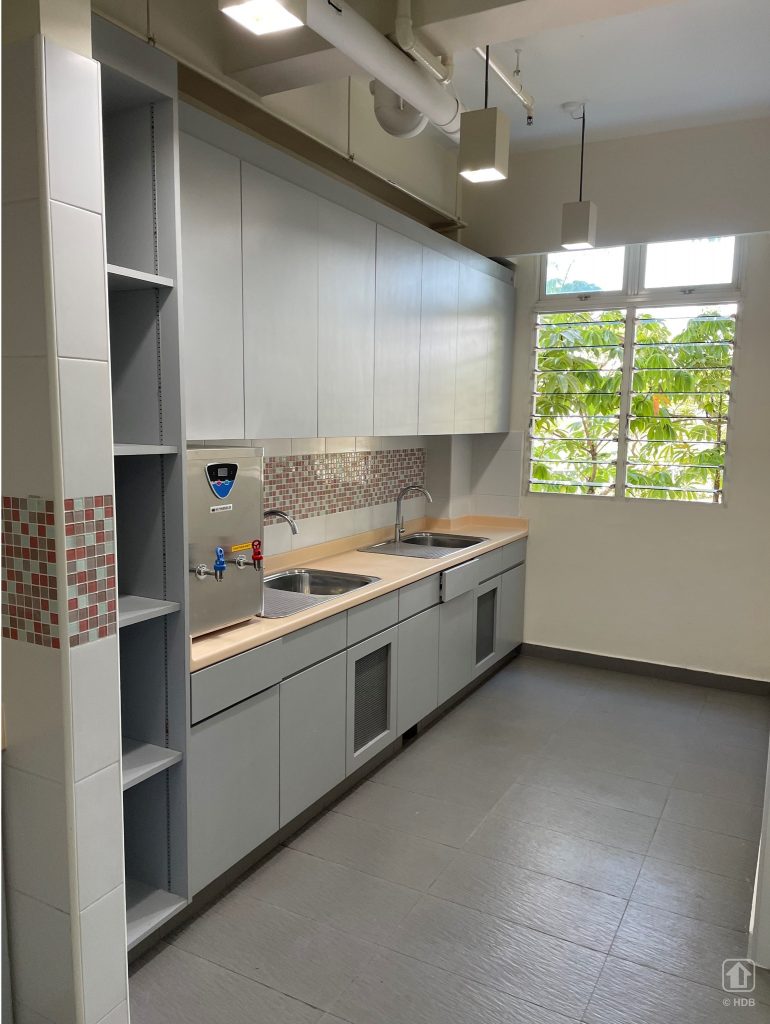
Making a Dorm a Home
Don’t get me wrong. I’m all for this pilot programme. After all, for some, having their own space—no matter how basic—wins out over bunking with family or sleeping rough.
Currently, singles who are above 35 but can’t afford to purchase their own HDB flat can apply for a public rental flat under the Joint Singles Scheme (JSS) with two or more flatmates.
This pilot gives them yet another affordable option. Unlike renting in the open market, those under the Public Rental Scheme enjoy heavily subsidised rents ranging from $26 to $275 depending on income level and first-timer applicant status.
The next cheapest options for singles are co-living spaces, which start from $800 per month, or renting a place in an estate that’s a little more out of the way such as Bukit Panjang, Jurong West or Woodlands. In these areas, the median rent for a three-room flat range from $2,000 to $2,300—somewhat manageable if you’ve got housemates, but still a pretty penny.
Besides the low rent at these hostel-style accommodations, there is a good explanation for the bare-bones look. According to National Development Minister Desmond Lee, retrofitting the former hostel site will reduce the preparation time for the pilot, and requires fewer resources than building a new facility from scratch.
“This is using existing infrastructure and making do with what we have to test out this model.”
Fair point, but I do think the facilities can afford to be a little more, you know, homely. With the pilot projected to run for one to two years, surely more modifications can be made to the space for more semblance of a home.
To revisit the prison comparison, Halden Prison in Norway is specifically designed to minimise inmates’ sense of institutionalisation, ease psychological stress and minimise interpersonal friction.
That means that each inmate gets their own toilet and shower, TV, and a view of the forest surrounding the compound.
It goes without saying that we’re working with very different space constraints compared to our Scandinavian counterparts. And there’s also the fact that people who don’t like these rental hostels are free to consider other options. You get what you pay for.
At CNA Youth Forum last November, DPM Lawrence Wong got real about Singapore’s limited landscape and gave single millennials a reality check.
“If you have more and more households fragmenting—that means people moving out to live on their own—we just will not have enough land to accommodate everyone’s needs.”
But is Singapore really that short on space that our low-income singles have to settle for fewer creature comforts than a Nordic prison inmate?
At the end of the day, I guess it’s better than settling for an unhappy relationship. Now that would be truly a prison.

